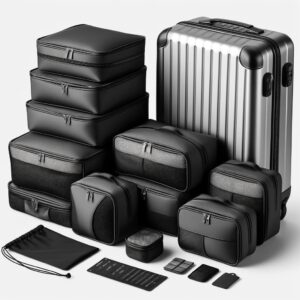When you’re travelling to North or Central America, or certain parts of Asia, you’ll notice that they mostly use Type A sockets.
This type of socket is specifically designed for a two-pronged, ungrounded plug with two flat, parallel pins.
Features of the Type A Socket
One thing to note about Type A plugs is that the pins often have small holes at the end. These holes help the plug fit securely into the socket, so it doesn’t come loose easily.

| Number of pins | 2 |
| Grounded | No |
| Voltage | 100 – 127 volts |
| Ampere | 15 amps |
| Other types of plugs that fit | None |
| Other sockets compatible with Type A | Type B Sockets |
| Do you need a travel adaptor for your UK devices? | Yes |
Type A sockets and plugs are designed for devices with up to 15 amps. They operate at a voltage between 100 and 127 volts. This type of socket, officially known as NEMA 1-15, was invented by Harvey Hubbell II back in 1904.
Click here if you need a travel adaptor for Type A.
Dimensions
The pins on Type A plugs are standardised, with a width of 1.5 millimetres and a length ranging from 15.9 to 18.2 millimetres. The pins are spaced 12.7 millimetres apart.
Use of Type A plugs
Type A sockets are exclusively designed for Type A plugs. However, you can also use these plugs in Type B sockets.
It doesn’t work the other way around though; Type B plugs won’t fit into Type A sockets.
You’ll find Type A sockets in countries like Aruba, Canada, Costa Rica, Cuba, Japan, Mexico, and Thailand. If you’re not sure whether your holiday destination uses Type A sockets, you can use the search function (top right) on this website.


